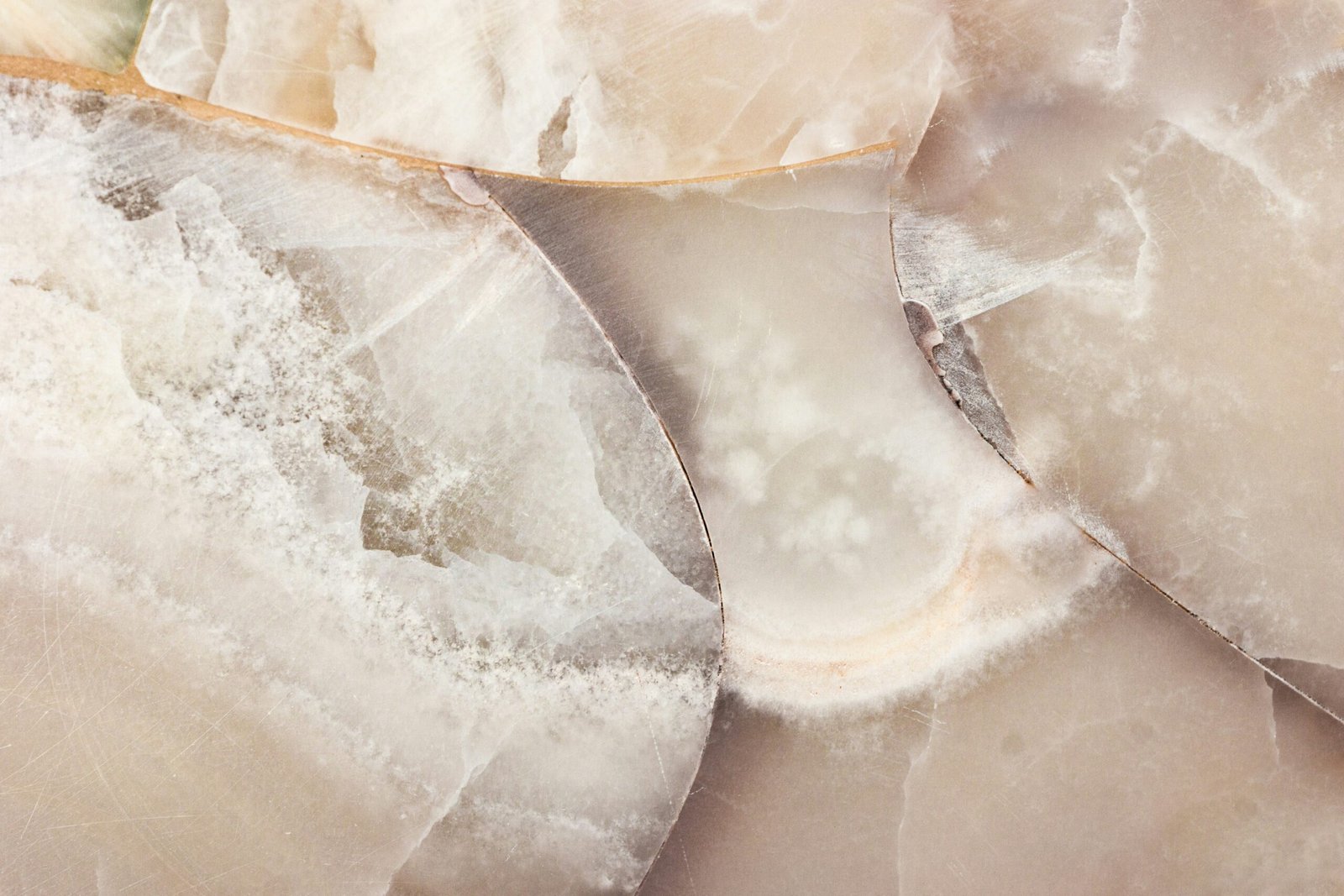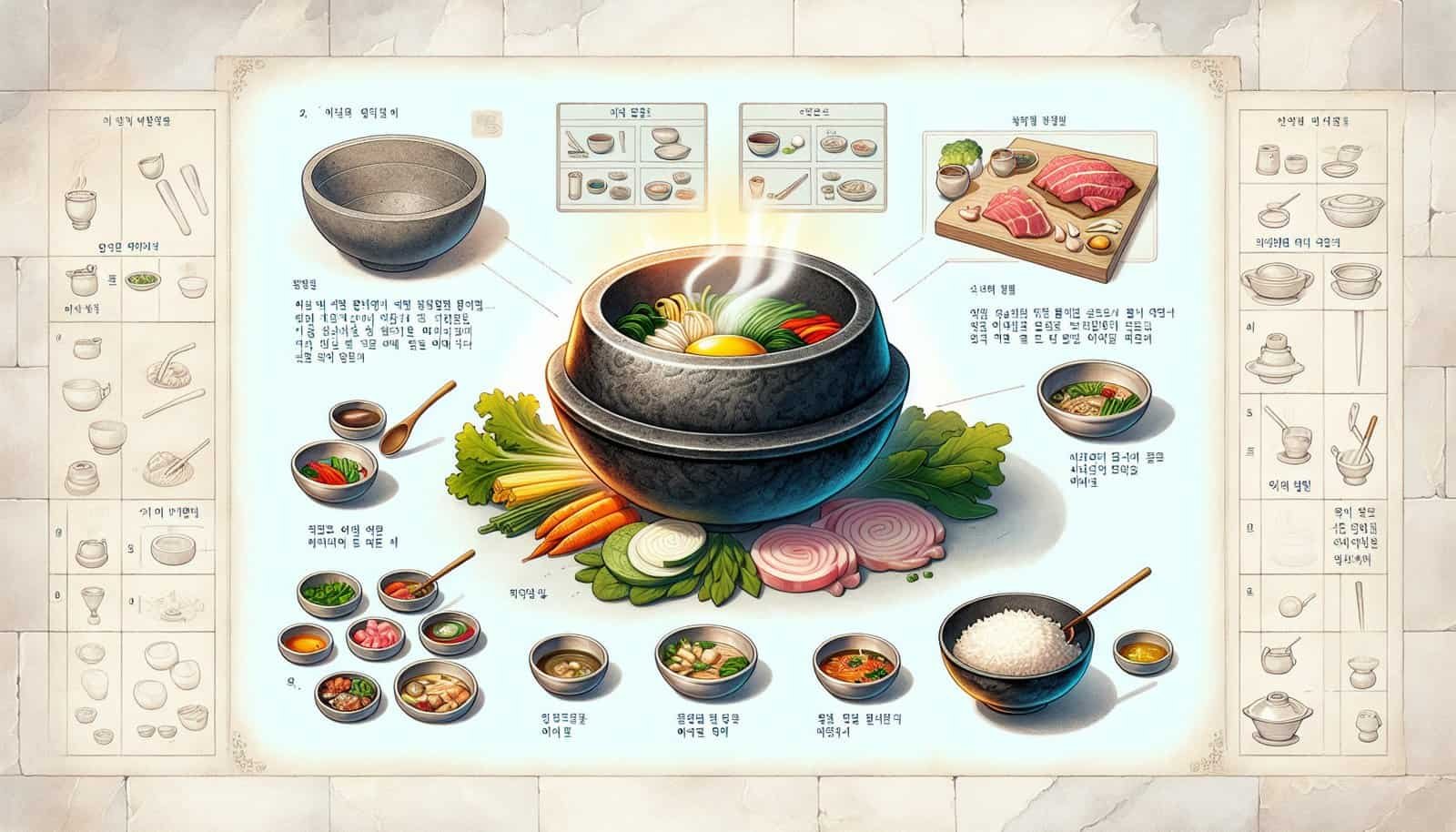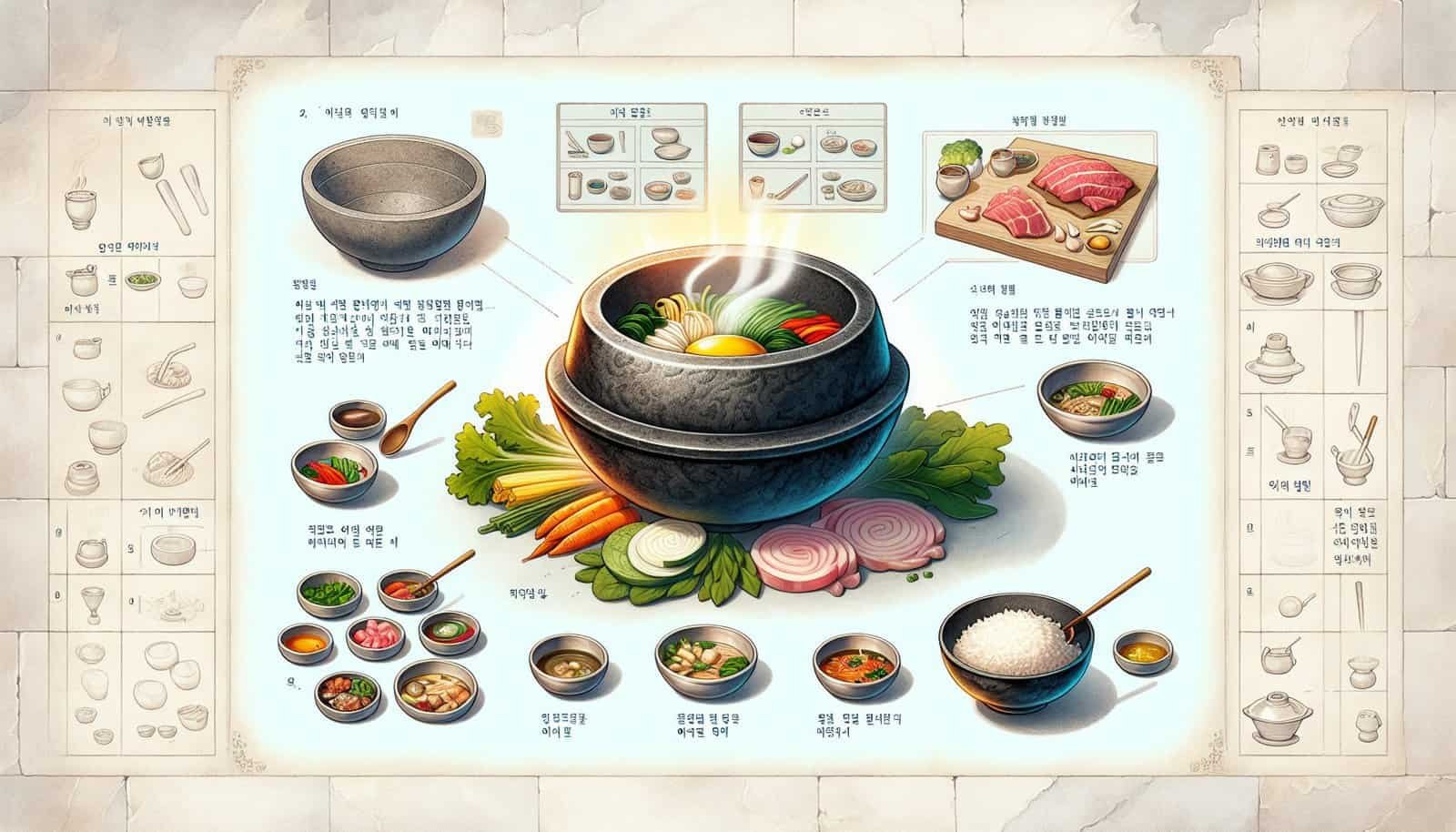So you’ve just acquired a beautiful traditional Korean stone bowl, also known as a dolsot, and now you’re wondering how to properly care for it and make the most of its unique qualities. Well, you’ve come to the right place! In this article, we will guide you through the necessary steps to ensure your stone bowl remains in pristine condition and provide you with some tips on how to use it to create delicious meals. Get ready to embark on a culinary adventure as we explore the fascinating world of the dolsot!

What is a traditional Korean stone bowl (dolsot)?
Definition
A traditional Korean stone bowl, also known as a dolsot, is a type of cookware made from natural stone. These bowls are typically round in shape, with a thick and heavy construction. The stone used to make dolsots is often porous, allowing it to retain and distribute heat evenly. The inside of the bowl is usually unglazed, which gives it a rough texture that helps enhance the flavors of the food cooked in it.
History and cultural significance
Traditional Korean stone bowls have a long history and cultural significance in Korean cuisine. They have been used for centuries as a cooking vessel to prepare various Korean dishes. The dolsot is particularly famous for its role in the preparation of bibimbap, a traditional Korean mixed rice dish. The dolsot’s ability to retain heat allows the rice to become crispy at the bottom, creating a unique and delicious flavor. The stone bowl is also often used for serving hot soups and stews, as it helps to keep the food warm for a longer period of time.
Benefits of using a traditional Korean stone bowl
Excellent heat retention
One of the key benefits of using a traditional Korean stone bowl is its excellent heat retention. The porous nature of the stone allows it to absorb and retain heat, keeping the food warm for a longer period of time. This is especially useful when serving hot soups and stews, as it helps to maintain the temperature of the dish throughout the meal.
Even heat distribution
Another advantage of using a dolsot is its ability to distribute heat evenly. The stone bowl absorbs heat slowly and evenly, ensuring that the food is cooked uniformly. This helps to prevent hot spots and ensures that the flavors in the dish are fully developed.
Enhancement of flavors
The rough texture of the unglazed interior of the traditional Korean stone bowl helps to enhance the flavors of the food cooked in it. It allows for better caramelization and browning, resulting in a deeper and richer taste. The heat from the bowl also intensifies the flavors and aromas, making each bite more flavorful and enjoyable.
Versatility in cooking
Apart from its traditional use in Korean cuisine, a dolsot can also be used for cooking a wide range of dishes from other cuisines. The bowl’s ability to retain and distribute heat evenly makes it suitable for various cooking techniques such as frying, baking, and pan-searing. Its versatility makes it a valuable addition to any kitchen.
Caring for your traditional Korean stone bowl
Seasoning the stone bowl
To ensure that your traditional Korean stone bowl remains in optimal condition, it is important to season it properly. Seasoning is the process of coating the interior of the bowl with oil, which helps to create a non-stick surface and prevents the food from sticking.
Cleaning and maintenance
Proper cleaning and maintenance are essential to prolong the life of your dolsot. After each use, it is important to remove any food residues from the bowl to prevent the buildup of bacteria. Harsh detergents should be avoided, as they can damage the porous stone. Additionally, the bowl should be thoroughly dried and stored in a cool and dry place.
Avoiding thermal shock
Thermal shock can cause the stone bowl to crack or break. To avoid this, it is important to take certain precautions when using and handling the dolsot.
Seasoning the stone bowl
Initial seasoning process
When you first acquire a traditional Korean stone bowl, it is necessary to season it before use. To do this, coat the inside of the bowl with a thin layer of cooking oil. Place the bowl in a cold oven and heat it gradually to 350°F (175°C) for about 30 minutes. Then, remove the bowl from the oven and allow it to cool completely. This initial seasoning process helps to create a protective layer on the surface of the stone, making it more resistant to sticking.
Regular re-seasoning
Over time, the seasoning on the stone bowl may wear off. To maintain its non-stick properties, it is recommended to re-season the bowl periodically. This can be done by applying a light layer of oil to the interior of the bowl and heating it in the oven at a low temperature for a short period of time.

Cleaning and maintenance
Removing food residues
After each use, it is important to remove any food residues from the stone bowl. Use a soft brush or sponge to gently scrub the interior of the bowl with warm water. Avoid using abrasive cleaners or scouring pads, as they can scratch the surface of the stone.
Avoiding harsh detergents
Harsh detergents should be avoided when cleaning a traditional Korean stone bowl. The porous nature of the stone can absorb chemicals from the detergents, which can affect the taste of the food. Instead, use mild dish soap or a mixture of baking soda and water to clean the bowl.
Drying and storing
To prevent the growth of bacteria or mold, it is important to thoroughly dry the stone bowl after cleaning. Air drying is the best method, but if time is limited, you can place the bowl in a warm oven for a few minutes to ensure it is completely dry. Once dry, store the bowl in a cool and dry place to prevent any moisture from affecting the stone.
Avoiding thermal shock
Preheating the stone bowl
Before using your traditional Korean stone bowl, it is important to preheat it gradually. This helps to prevent thermal shock and minimize the risk of cracking or breaking. Place the empty stone bowl in a cold oven and gradually increase the temperature until it reaches the desired cooking temperature.
Gradual temperature changes
When cooking with a dolsot, it is important to avoid sudden and extreme temperature changes, as they can cause thermal shock. Allow the bowl to cool down gradually after cooking by removing it from the heat source and letting it sit at room temperature. Do not place a hot stone bowl directly on a cold surface, as this can also cause thermal shock.
Careful handling
When handling a traditional Korean stone bowl, it is important to exercise caution to avoid dropping or knocking it against hard surfaces. The heavy and fragile nature of the bowl makes it vulnerable to damage. Always use oven mitts or heat-resistant gloves when handling a hot stone bowl to protect your hands.

Using your traditional Korean stone bowl
Preheating the stone bowl
Before cooking with a traditional Korean stone bowl, it is necessary to preheat it to the desired temperature. This helps to ensure that the food cooks evenly and enhances the flavor. There are two methods for preheating a dolsot: dry preheating and wet preheating.
Dry preheating
To dry preheat the stone bowl, place it empty on a stovetop or in the oven and gradually increase the temperature until it reaches the desired cooking temperature. This method is suitable for cooking dishes that require high heat, such as frying or searing.
Wet preheating
Wet preheating involves adding a small amount of water to the stone bowl before placing it on a stovetop or in the oven to preheat. The water helps to prevent the food from sticking to the bowl and adds moisture to the cooking process.
Cooking with the stone bowl
Traditional Korean dishes
A traditional Korean stone bowl is perfect for cooking a variety of traditional Korean dishes. One popular dish that can be prepared in a dolsot is bibimbap. This mixed rice dish is made by layering cooked rice, various vegetables, meat or tofu, and a fried egg in the stone bowl. The heat from the bowl creates a crispy layer of rice at the bottom, while the rest of the ingredients cook and meld together, creating a delicious and visually appealing meal.
Non-Korean dishes
In addition to Korean cuisine, a traditional Korean stone bowl can also be used to cook non-Korean dishes. The even heat distribution and excellent heat retention of the bowl make it ideal for dishes such as stir-fries, curries, and even desserts. The versatility of the dolsot allows you to explore a wide range of flavors and culinary techniques.

Recipes for traditional Korean stone bowl meals
Bibimbap
Ingredients:
- Cooked rice
- Assorted vegetables (such as carrots, spinach, bean sprouts, and mushrooms)
- Cooked meat (such as beef, pork, or chicken)
- Fried egg
- Gochujang (Korean red pepper paste)
Instructions:
- Preheat the stone bowl.
- Layer the cooked rice at the bottom of the bowl.
- Arrange the vegetables and cooked meat on top of the rice.
- Cook the fried egg separately and place it on top of the vegetables.
- Serve the bibimbap in the stone bowl, garnishing it with a dollop of gochujang. Mix everything together before eating to enjoy the flavors.
Kimchi jjigae
Ingredients:
- Kimchi
- Pork belly or tofu
- Onion
- Garlic
- Gochujang
- Korean chili flakes
- Chicken or vegetable broth
- Green onions
Instructions:
- Preheat the stone bowl.
- Sauté the pork belly or tofu in the stone bowl until cooked.
- Add the onion and garlic to the bowl and sauté until fragrant.
- Add the kimchi, gochujang, and Korean chili flakes to the bowl, stirring well.
- Pour in the chicken or vegetable broth and bring to a boil.
- Simmer the kimchi jjigae in the stone bowl for about 15-20 minutes.
- Serve the stew in the stone bowl, garnishing it with chopped green onions.
Sundubu jjigae (soft tofu stew)
Ingredients:
- Soft tofu
- Clams or shrimp
- Onion
- Garlic
- Korean chili flakes
- Chicken or vegetable broth
- Green onions
- Sesame oil
Instructions:
- Preheat the stone bowl.
- Sauté the onion and garlic in the stone bowl until softened.
- Add the clams or shrimp to the bowl and cook until they start to open or turn pink.
- Add the soft tofu, Korean chili flakes, and chicken or vegetable broth to the bowl, stirring gently.
- Simmer the sundubu jjigae in the stone bowl for about 10-15 minutes.
- Serve the stew in the stone bowl, garnishing it with chopped green onions and a drizzle of sesame oil.
In conclusion, a traditional Korean stone bowl, or dolsot, is a versatile and valuable addition to your kitchen. Not only does it offer excellent heat retention and even heat distribution, but it also enhances the flavors of the food cooked in it. By properly caring for and using your dolsot, you can enjoy a wide range of delicious and authentic Korean meals, as well as explore other cuisines. So, start seasoning your stone bowl, try out some traditional recipes, and enjoy the unique cooking experience that a dolsot brings to your culinary adventures.
